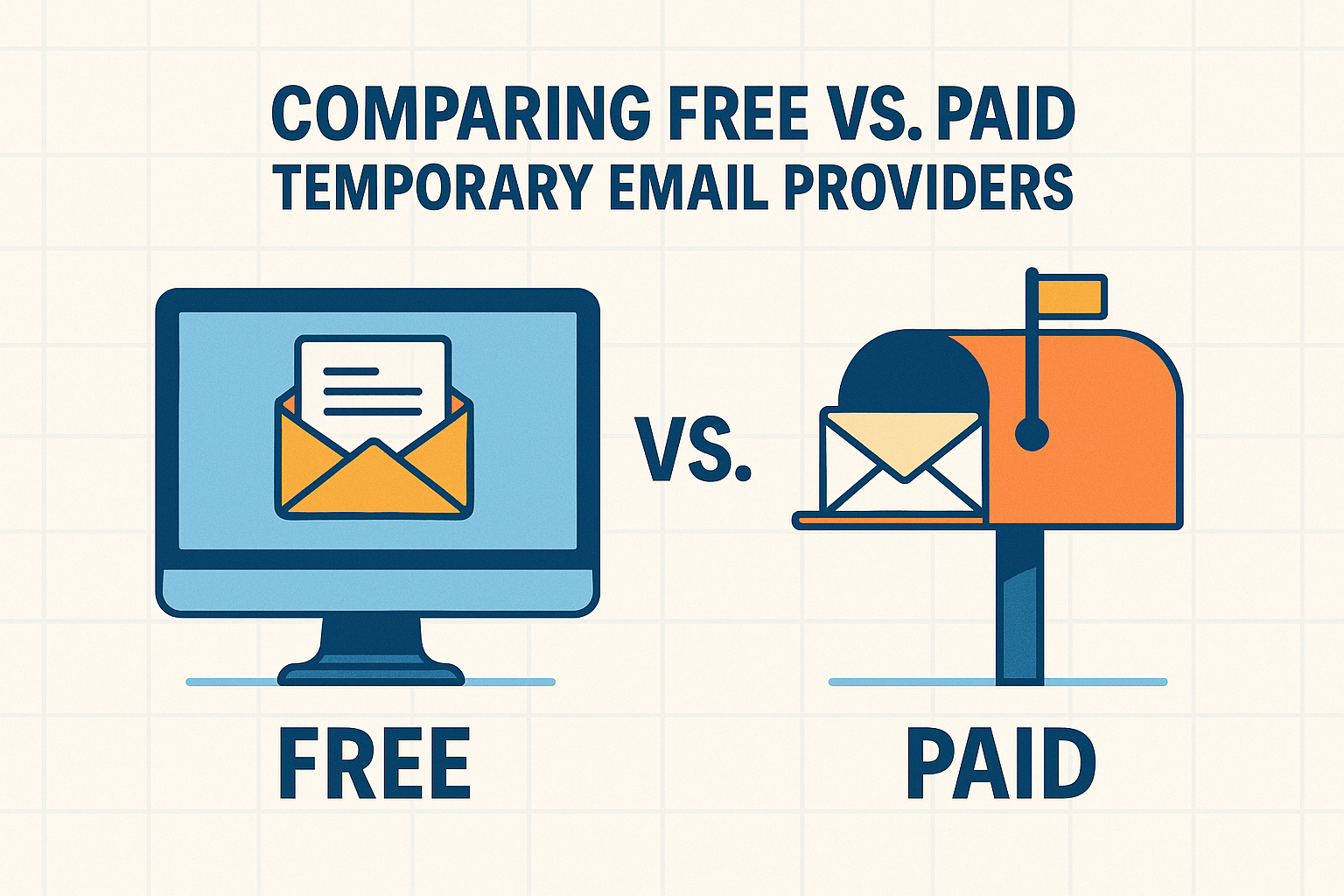In today’s fast-moving digital landscape, maintaining your privacy and inbox hygiene is more important than ever. Temporary email services offer a convenient way to protect your primary mailbox from spam and data breaches. However, not all disposable email platforms are created equal. Some come without a price tag, while others charge a subscription fee for advanced features. This article dives into the key differences between free and paid temporary email providers, helping you choose the right solution for your needs.
1. Cost & Accessibility
Free Providers:
No upfront fees; often supported by ads or donations.
Instant generation of throwaway addresses without registration.
Examples: 10MinuteMail, GuerrillaMail.
Paid Providers:
Monthly or yearly subscription plans (typically $1–$10/month).
Ad-free experience with guaranteed uptime and support.
Examples: TempMailPro, MailShield Premium.
Which to choose?
If you only need quick, one-off addresses for low-stakes sign-ups, free services are ideal. For regular usage, dedicated support, or guaranteed availability, paid plans offer clear value.
2. Feature Set & Customization
Lifespan Control:
Free: Fixed lifespans (e.g., 10 minutes to 24 hours).
Paid: Adjustable timers and extended retention (days to weeks).
Custom Aliases & Domains:
Free: Limited or no choice—random addresses on shared domains.
Paid: Choose your prefix or even add your domain for branding consistency.
Additional Tools:
Free: Basic inbox view and message preview.
Paid: API access, webhooks, browser extensions, and advanced search filters.
Tip: Developers and power users benefit greatly from API integrations found mostly in paid tiers.
3. Security & Privacy Guarantees
Data Handling:
Free: Basic privacy policies; some services log IPs and user agents.
Paid: Stricter “no-logs” commitments, GDPR compliance, and encrypted archives.
Reliability & Uptime:
Free: Occasional downtime or limited server resources.
Paid: Service-level agreements (SLAs) promise high availability (99.9%+).
Consideration: If confidentiality or service continuity is critical, invest in a paid provider with robust security measures.
4. Ad Experience & Branding
In-Interface Ads:
Free: Banner ads, pop-ups, and interstitial promotions can interrupt your workflow.
Paid: Clean, ad-free interface tailored to professionals.
Custom Branding:
Free: No branding options—emails show generic headers.
Paid: White-label domains or custom footers, ideal for agencies or corporate users.
5. Support & Community
Customer Support:
Free: Community forums and basic email support, often delayed.
Paid: Priority customer service via chat or phone, faster issue resolution.
Documentation & Resources:
Free: Limited how-to guides and FAQs.
Paid: Detailed API documentation, SDKs, and sample code.
Making the Right Choice
Occasional Use: Opt for a free service like 10MinuteMail or GuerrillaMail—no cost, no commitment.
Frequent/Business Use: Choose a paid provider such as TempMailPro or MailShield Premium for advanced features, reliability, and support.
Developer Integration: Look for robust API and automation tools in paid plans for seamless workflow integration.
Ultimately, weigh your priorities—speed and zero-cost versus customization and reliability—and select a provider that aligns with how you use temporary email. Whether you’re signing up for a one-time trial or managing multiple aliases for business testing, understanding these trade-offs will help you maintain a clean, secure, and organized inbox.

